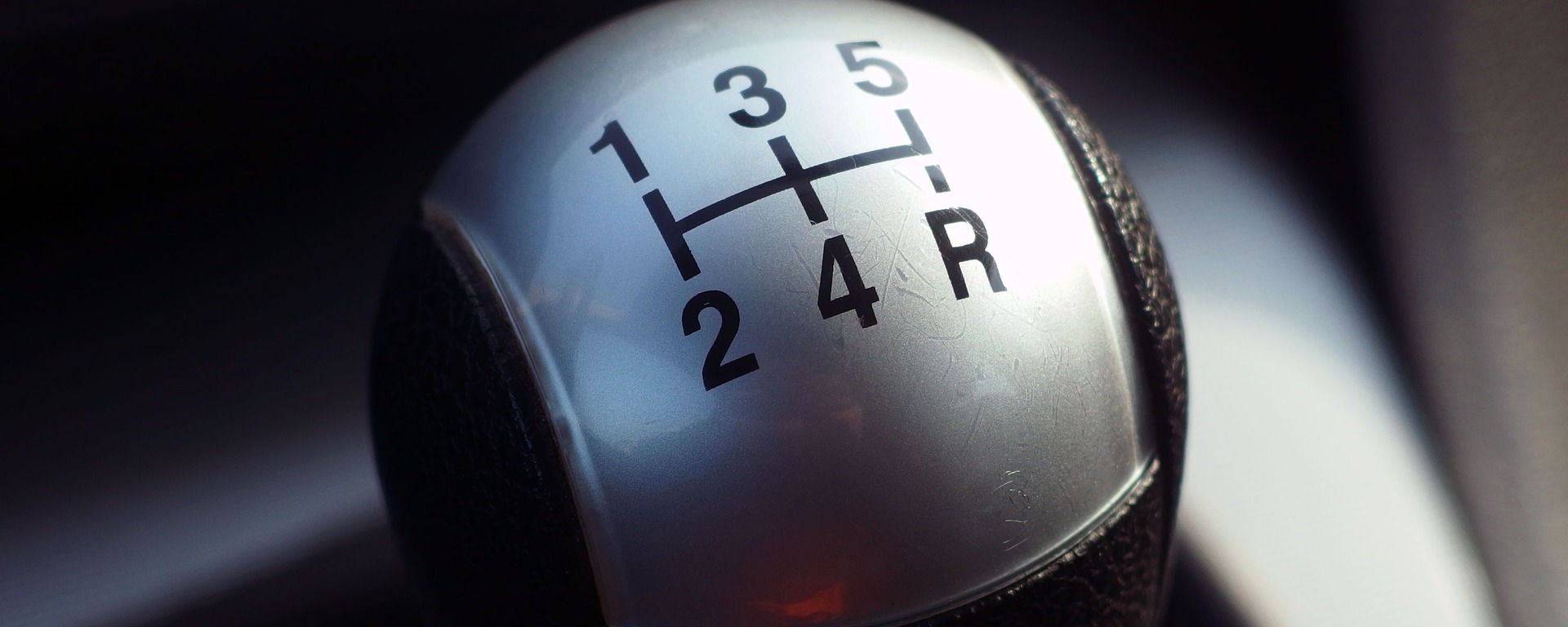Car Gears - Learning to Drive
Posted on 19th February 2024 at 17:57
Learning to drive a manual car is a skill that, despite the rising popularity of automatic transmissions, remains valuable for a comprehensive understanding of vehicle control. The gearbox and the art of gear shifting are central to this skill. This article explores the essentials of gears in driving, including how to determine the appropriate gear, the process of changing gears smoothly and quickly, and the concept of block gear changes.
Car Gears:
The Gear Lever:
At the heart of a manual transmission is the gear lever, which allows the driver to manually select the appropriate gear. Positioned within easy reach of the driver, the gear lever is directly connected to the gearbox, facilitating the engagement of different gears.
The Gearbox:
The gearbox is a mechanical component designed to vary the power delivered to the wheels. It ensures that the engine operates within an optimal rev range, regardless of the vehicle's speed.
Gear Positions:
Manual transmissions typically feature five or six forward gears and one reverse gear, marked with numbers and an 'R' respectively. The gear positions are arranged in a pattern that is intuitive to learn and operate.
Understanding gear positions is fundamental to mastering manual transmission driving. Each position corresponds to a specific gear ratio, allowing the driver to control the vehicle's speed and torque effectively. Here's a deeper look into gear positions and their significance in driving:
1st Gear
The first gear provides the highest torque to overcome inertia and get the car moving from a standstill. It's used for starting the vehicle, moving off, and low-speed maneuvers. Due to its high torque, it should only be used for initial acceleration.
2nd Gear
Second gear offers a balance between power and speed, making it ideal for slow-speed scenarios such as navigating roundabouts, junctions, or increasing speed after moving off. It's also useful in conditions where first gear's acceleration is too aggressive.

3rd Gear
The third gear is the middle ground in the gearbox, suitable for urban driving where speed limits fluctuate between low and moderate. It provides enough power for uphill driving and is often used in situations requiring more power than fourth gear but with better fuel efficiency than second.
4th Gear
Fourth gear is designed for steady driving at moderate speeds. It's perfect for driving in urban areas where the speed limit is around 30 mph. This gear offers a lower power output but higher speed than third gear, making it efficient for maintaining a consistent speed.
5th Gear (and Beyond)
Fifth gear, and any higher gears, are intended for high-speed cruising, reducing engine RPM to save fuel on highways and open roads. These gears lower the engine's power output to the wheels, making them unsuitable for low-speed driving but excellent for efficiency at high speeds.
Reverse Gear
The reverse gear allows the vehicle to move backward. It has a high torque similar to first gear to overcome the initial inertia from a standstill.
Neutral
Not a gear per se, neutral disengages the gearbox from the engine, allowing the engine to run or the vehicle to coast without power transmission to the wheels. It's used when the vehicle is stationary and during gear changes.
Understanding when and how to use these gear positions is crucial for efficient and safe driving. Each gear has a specific role in managing the vehicle's speed and power, and knowing how to navigate through these gears smoothly is a skill that comes with practice and experience.
Block Gear Changes:
Block changing is a technique that allows drivers to skip gears when accelerating or decelerating, improving fuel efficiency and reducing clutch wear. This method is particularly useful in situations where rapid acceleration or deceleration is required.
Gear Changes FAQs:
How do you know what gear to be in when driving?
The appropriate gear depends on the vehicle's speed and the driving conditions. As a general rule, lower gears are used for lower speeds and higher gears for higher speeds. Listening to the engine's sound and noting the vehicle's speed helps in selecting the correct gear.
How long does it take to learn gears?
The time it takes to learn how to operate gears varies from person to person. With regular practice, most learners can become comfortable with basic gear changes within a few hours, but mastering smooth and efficient gear shifting may take several weeks or more.
How do you remember gears in a car?
Familiarity with the gear lever's pattern aids in memorising gear positions. Practice and muscle memory play a significant role in learning how to shift gears without looking at the gear lever.
At what revs should I change gear?
The optimal rev range for changing gears varies depending on the vehicle and driving conditions. Generally, shifting up at 2,000 to 2,500 rpm in petrol cars and around 1,500 to 2,000 rpm in diesel cars is recommended for normal driving.
How do you change gear smoothly?
To change gears smoothly, press the clutch pedal fully, select the desired gear gently but firmly, and then gradually release the clutch while gently applying the accelerator. Timing and coordination between the clutch and accelerator are key to a smooth gear change.
How do you change gears quickly?
Quick gear changes require a confident and swift movement of the gear lever with minimal time spent with the clutch disengaged. Practicing the coordination between moving the gear lever and operating the clutch and accelerator pedals is essential for speeding up gear changes.
Can you skip gears when slowing down?
Yes, skipping gears while slowing down, known as block changing, is possible and can be beneficial in certain driving scenarios, such as reducing speed significantly in a short distance.
What happens if you go into first gear at high speed?
Engaging first gear at high speed can cause the engine to rev excessively and may lead to engine damage or loss of control. It's crucial to ensure the vehicle is at an appropriate speed before selecting lower gears.
In conclusion, mastering the gearbox in a manual car is a crucial aspect of learning to drive that offers drivers enhanced control and a deeper connection with their vehicle. Through understanding the function and operation of the gear lever, gearbox, and gear positions, drivers can navigate the complexities of manual transmission with confidence.
The ability to change gears smoothly, quickly, and even skip gears when necessary, not only contributes to a more efficient and enjoyable driving experience but also ensures optimal vehicle performance and safety.
While the learning curve for operating gears may vary among individuals, with consistent practice and mindful application of the techniques discussed, the art of manual driving can be mastered. Ultimately, the knowledge and skills gained in manual gear shifting empower drivers with the versatility to adapt to diverse driving conditions and the satisfaction of engaging directly with the mechanics of their vehicle.
For more help and support, join our online theory test course today to get ready for success.




Share this post:




